Table of Contents
Have you ever felt like your mind is running a marathon while your body’s stuck in traffic? You’re not alone. In our fast-paced world, finding mental clarity has become more challenging than ever. But here’s the good news: yoga for mental clarity isn’t just ancient wisdom—it’s a scientifically-backed practice that can transform your mental wellness journey.
Understanding Mental Clarity: What Does It Really Mean?
Let’s start with the basics. Mental clarity is your brain’s ability to think clearly, focus without distraction, and process information efficiently. Think of it as having a clean windshield instead of trying to drive through mental fog.
When you have mental clarity, you can:
- Make decisions without second-guessing yourself
- Stay focused on tasks for longer periods
- Manage stress without feeling overwhelmed
- Process emotions in a healthy way
Mental wellness encompasses this clarity, and here’s where yoga becomes your secret weapon. Research shows that physical practices like yoga directly impact your psychological health by calming both mind and body.
How Does Yoga Support Mental Wellness?
Yoga isn’t just about touching your toes—it’s about creating harmony between your mind and body. When you practice yoga, you’re essentially giving your nervous system a much-needed reset.
Here’s what happens during a yoga session:
- Deep breathing activates your parasympathetic nervous system (your body’s “rest and digest” mode)
- Mindful movement helps release physical tension that often mirrors mental stress
- Meditative focus trains your brain to stay present instead of spiraling into anxious thoughts
Stanford research reveals that regular yoga practice can lower cortisol levels—your body’s primary stress hormone. This isn’t just feel-good science; it’s measurable change in your body’s chemistry.
The Science Behind Yoga and Mental Clarity
Let’s dive deeper into the “why” behind yoga’s effectiveness. When you’re stressed, your body produces cortisol, which can cloud your thinking and make you feel scattered. Yoga works as a natural stress-buster by:
Regulating your nervous system: The combination of movement and breath work helps switch your body from “fight or flight” mode to “rest and restore.”
Improving brain function: Inversions and certain poses increase blood flow to your brain, delivering fresh oxygen and nutrients that support cognitive function.
Enhancing neuroplasticity: Regular practice literally rewires your brain, making it easier to maintain focus and emotional balance.
Top 5 Yoga Poses for Mental Clarity and Stress Relief
Ready to get practical? These five poses are your toolkit for achieving mental clarity through yoga. You don’t need to be a pretzel-bending expert—these poses are accessible for beginners and effective for everyone.
Child’s Pose (Balasana): Your Mental Reset Button
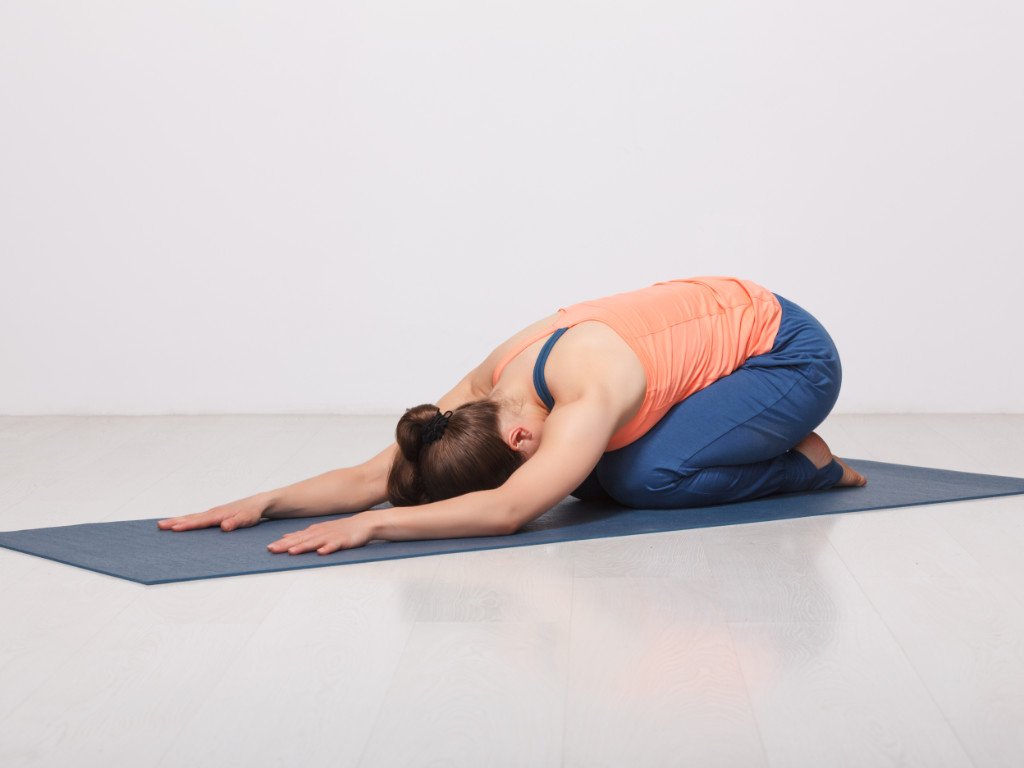
This gentle resting pose is like hitting the reset button on your nervous system. When you fold forward in Child’s Pose, you’re creating a safe, introspective space that naturally calms mental chatter.
How to do it:
- Kneel on your mat with your big toes touching
- Sit back on your heels and spread your knees wide
- Fold forward, extending your arms in front of you
- Rest your forehead on the mat and breathe deeply
Why it works: This pose activates your parasympathetic nervous system while encouraging deep, diaphragmatic breathing. It’s especially effective when you’re feeling overwhelmed or scattered.
Downward Facing Dog (Adho Mukha Svanasana): Energy Meets Calm
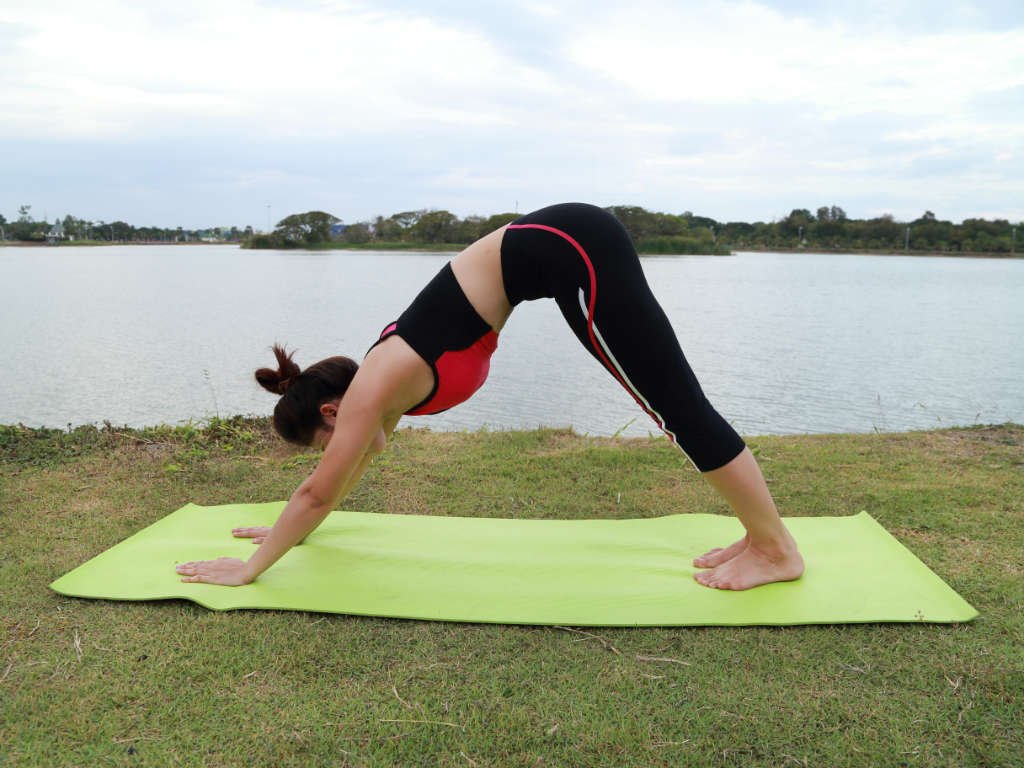
This iconic pose is like drinking a green smoothie for your brain—it energizes while simultaneously calming your mind. The inversion aspect increases blood flow to your brain, helping clear mental fatigue.
How to do it:
- Start on your hands and knees
- Tuck your toes under and lift your hips up and back
- Straighten your legs as much as comfortable
- Press firmly through your palms and breathe deeply
Why it works: The increased blood flow to your brain helps improve focus while the full-body engagement grounds you in the present moment.
Warrior II (Virabhadrasana II): Building Mental Endurance
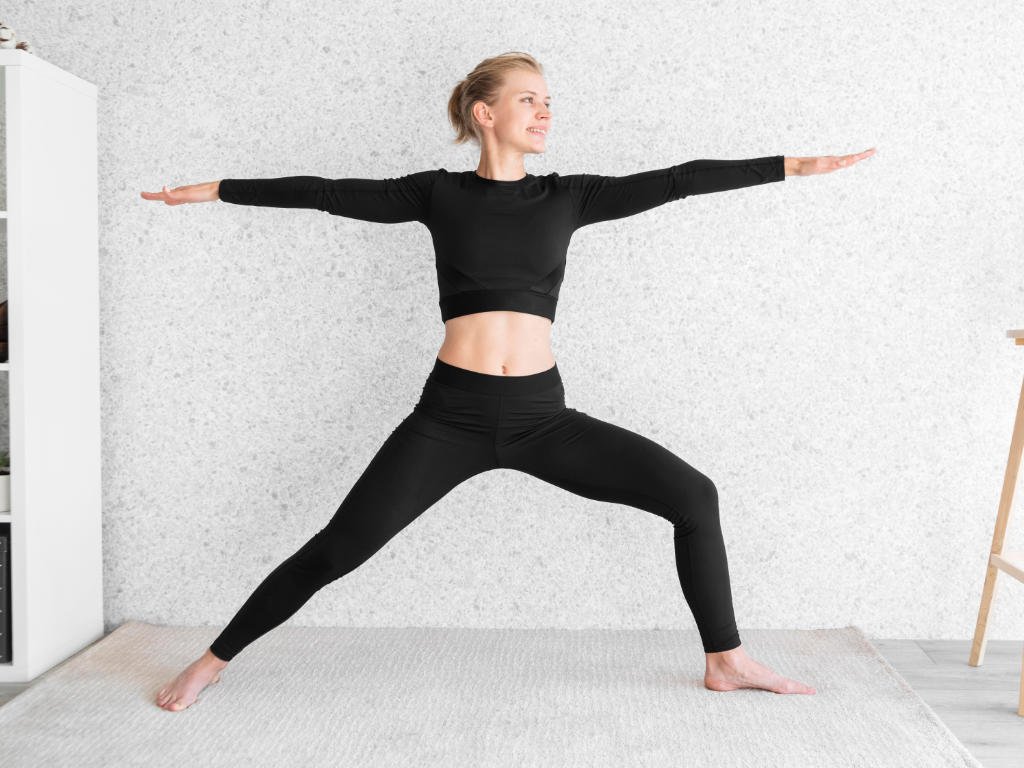
Warrior II isn’t just about physical strength—it’s about developing mental resilience and focus. This pose requires concentration and intentional breathwork, both essential for mental clarity.
How to do it:
- Stand with your feet wide apart
- Turn your right foot out 90 degrees, left foot slightly in
- Bend your right knee over your ankle
- Extend your arms parallel to the floor, gazing over your right hand
- Hold for 5-8 breaths, then switch sides
Why it works: The sustained hold builds mental endurance while the focused gaze (drishti) trains your mind to concentrate.
Seated Forward Bend (Paschimottanasana): Turning Inward
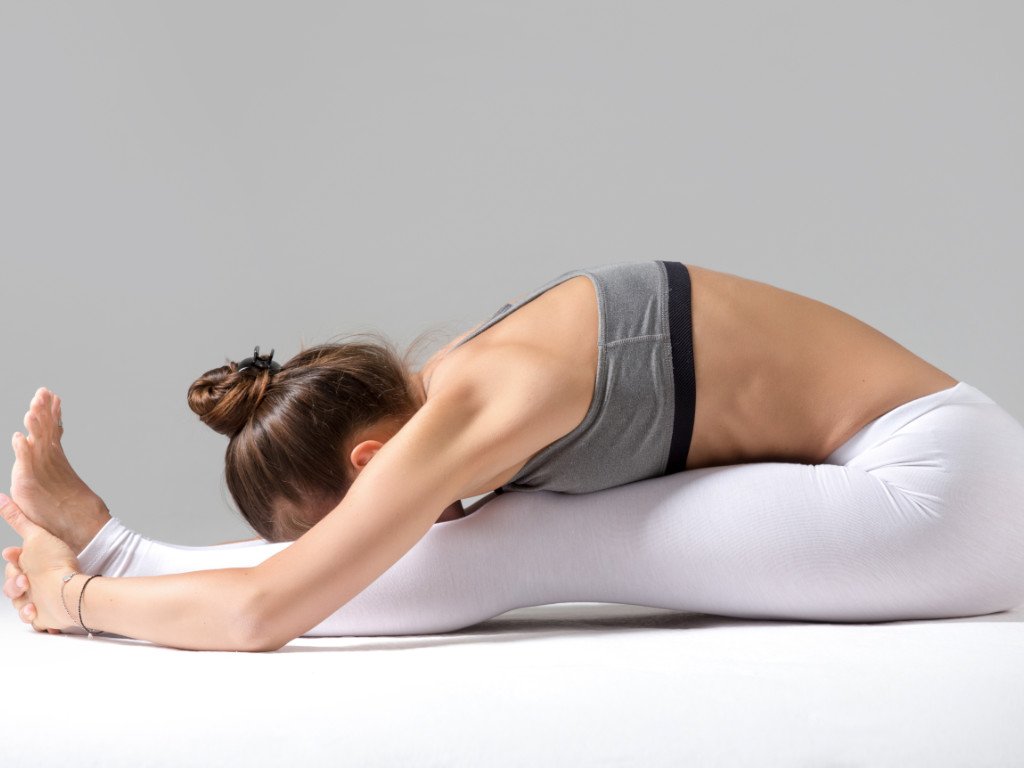
This pose encourages introspection and helps quiet the constant mental chatter. It’s particularly effective for stress relief and contemplation.
How to do it:
- Sit with your legs extended in front of you
- Inhale and sit up tall
- Exhale and fold forward from your hips
- Reach for your feet, shins, or knees—wherever feels comfortable
- Breathe deeply and hold for 1-2 minutes
Why it works: The forward fold activates your parasympathetic nervous system while the inward focus helps quiet mental noise.
Legs-Up-The-Wall Pose (Viparita Karani): Ultimate Relaxation
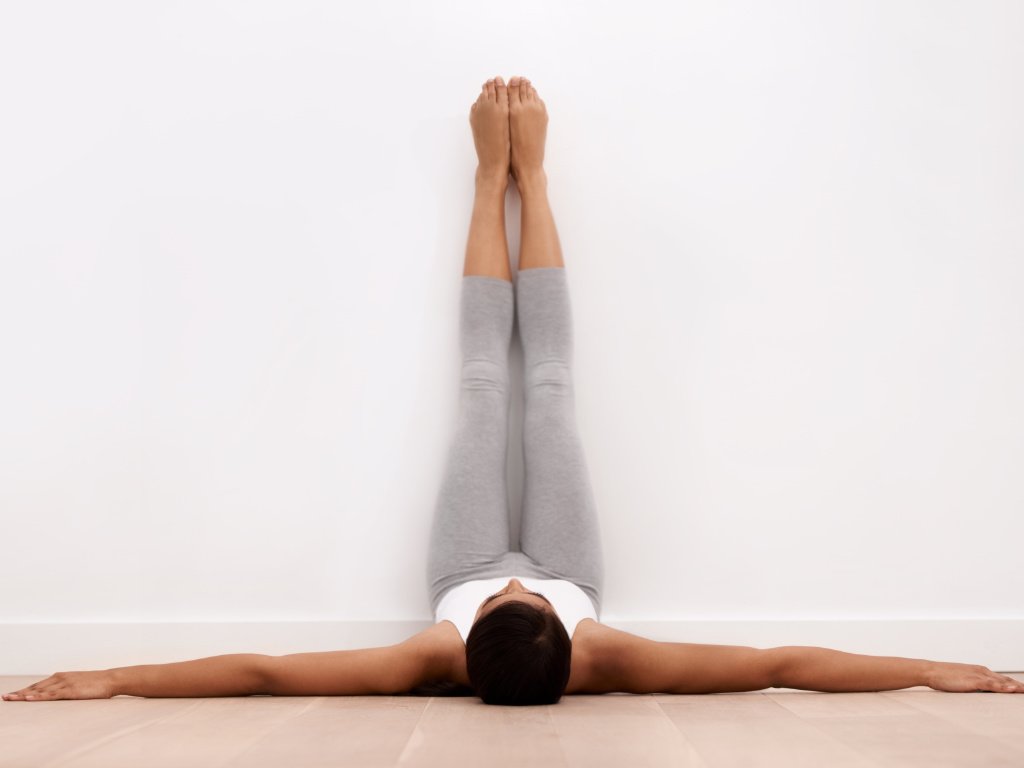
This restorative pose is like a reset button for your entire system. It’s incredibly effective for reducing anxiety and promoting emotional balance.
How to do it:
- Lie on your back near a wall
- Extend your legs up the wall
- Let your arms rest by your sides, palms up
- Close your eyes and breathe naturally
- Stay for 5-15 minutes
Why it works: This gentle inversion calms your nervous system while the supported position allows for complete relaxation.
What Role Does Meditation Play in Yoga for Mental Clarity?
Meditation and yoga are like peanut butter and jelly—great separately, but incredible together. When you combine yoga with meditation or mindful breathing practices, you’re amplifying the benefits exponentially.
Simple meditation techniques to try:
- Alternate nostril breathing: This balances your nervous system and improves focus
- Breath counting: Count your breaths from 1 to 10, then start over
- Body scan meditation: Mentally scan your body from head to toe, noticing sensations
Research from Calm shows that combining yoga with meditation can significantly enhance mental clarity and stress relief. Start with just 5 minutes of focused breathing before or after your yoga practice.
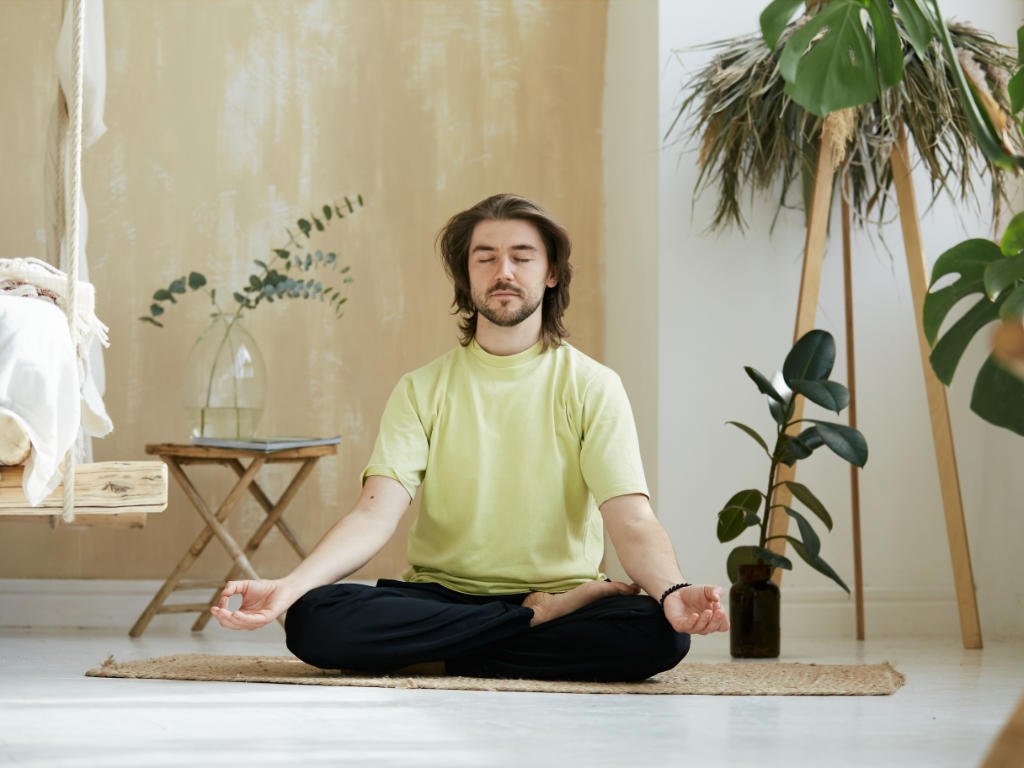
How Can You Create the Perfect Environment for Mental Clarity?
Your environment plays a crucial role in achieving mental clarity through yoga. Here’s how to set yourself up for success:
Create a dedicated space: Even if it’s just a corner of your bedroom, having a consistent practice space signals to your brain that it’s time to focus.
Minimize distractions: Turn off your phone, close the door, and let family members know you need uninterrupted time.
Set an intention: Before each practice, take a moment to set a clear intention. It could be “I’m practicing for calm” or “I’m here to find clarity.”
Keep it consistent: Even 10 minutes daily is more beneficial than an hour once a week. Consistency is key for long-term mental wellness.
What Are the Long-term Benefits of Yoga for Mental Health?
The benefits of yoga for mental clarity extend far beyond your time on the mat. Regular practitioners often report:
- Improved sleep quality: Better sleep means better mental clarity the next day
- Enhanced emotional regulation: You’ll find it easier to stay calm under pressure
- Increased self-awareness: You’ll become more attuned to your thoughts and feelings
- Better stress management: Daily stressors won’t feel as overwhelming
- Improved focus: You’ll be able to concentrate for longer periods
Studies show that people who practice yoga regularly have measurable improvements in anxiety, depression, and overall mental resilience.
How Often Should You Practice for Maximum Benefits?
Here’s the truth: consistency beats intensity every time. You’re better off practicing 15 minutes daily than cramming in a 2-hour session once a week.
Beginner schedule:
- Week 1-2: 10-15 minutes, 3 times per week
- Week 3-4: 15-20 minutes, 4 times per week
- Week 5+: 20-30 minutes, 5-6 times per week
Pro tip: Link your yoga practice to an existing habit. Maybe you do 10 minutes of yoga right after your morning coffee or before your evening shower. This makes it easier to stick with long-term.
Can Yoga Replace Traditional Mental Health Treatment?
While yoga is incredibly beneficial for mental wellness, it’s important to understand its role in your overall mental health strategy. Yoga works wonderfully as a complementary practice alongside traditional therapy or medication, but it shouldn’t replace professional mental health care if you’re dealing with serious conditions.
Mental health professionals often recommend yoga as part of a comprehensive treatment plan because it provides tools for self-regulation and stress management.
What Common Mistakes Should You Avoid?
Even with the best intentions, it’s easy to make mistakes that can limit your progress. Here are the most common pitfalls:
Forcing poses: Yoga should never hurt. If something doesn’t feel right, back off or modify.
Holding your breath: Remember, breath is the bridge between your mind and body. Keep breathing smoothly throughout your practice.
Comparing yourself to others: Your practice is uniquely yours. Focus on how you feel, not how you look.
Skipping the relaxation: That final rest in Savasana isn’t optional—it’s where your nervous system integrates all the benefits.
Frequently Asked Questions
How long does it take to see results from yoga for mental clarity?
Many people notice improvements in mood and stress levels after just one session. However, for lasting changes in mental clarity and emotional resilience, consistent practice for 4-6 weeks typically shows significant results.
Can I practice yoga if I have anxiety or depression?
Yes, yoga can be incredibly beneficial for anxiety and depression. However, it’s important to work with qualified instructors and inform them of any mental health concerns. Start slowly and listen to your body.
Do I need special equipment to practice yoga for mental clarity?
Not at all! While a yoga mat is helpful, you can start with just a towel or blanket. The most important “equipment” is your breath and intention.
Is morning or evening practice better for mental clarity?
Both have benefits. Morning practice can set a positive tone for your day, while evening practice can help you unwind and process the day’s stress. Choose what works best for your schedule and energy levels.
What if I can’t quiet my mind during yoga?
This is completely normal! The goal isn’t to stop thinking—it’s to notice your thoughts without getting caught up in them. Be patient with yourself; it’s called a “practice” for a reason.
Making Yoga a Sustainable Practice
The key to long-term success with yoga for mental clarity is making it sustainable. Here’s how:
Start small: Begin with just 5-10 minutes daily. It’s better to build a consistent habit than to burn out trying to do too much.
Be flexible: Some days you might only have time for three deep breaths. That’s okay! Any mindful moment counts.
Track your progress: Keep a simple journal noting how you feel before and after practice. This helps you see the benefits even when progress feels slow.
Find your tribe: Whether it’s an online community or local class, connecting with other practitioners can provide motivation and support.
Remember, achieving mental clarity through yoga is a journey, not a destination. Some days your mind will feel crystal clear, other days it might feel foggy—and that’s perfectly normal. The practice itself is what builds resilience and creates lasting change.
Yoga offers a powerful, accessible way to support your mental wellness and achieve greater clarity in your daily life. By incorporating these poses and principles into your routine, you’re not just improving your flexibility—you’re investing in your mental health and overall well-being.
What’s stopping you from starting today? Even five minutes of mindful breathing can begin to shift your mental state. Your future self will thank you for taking this step toward greater mental clarity and emotional balance.


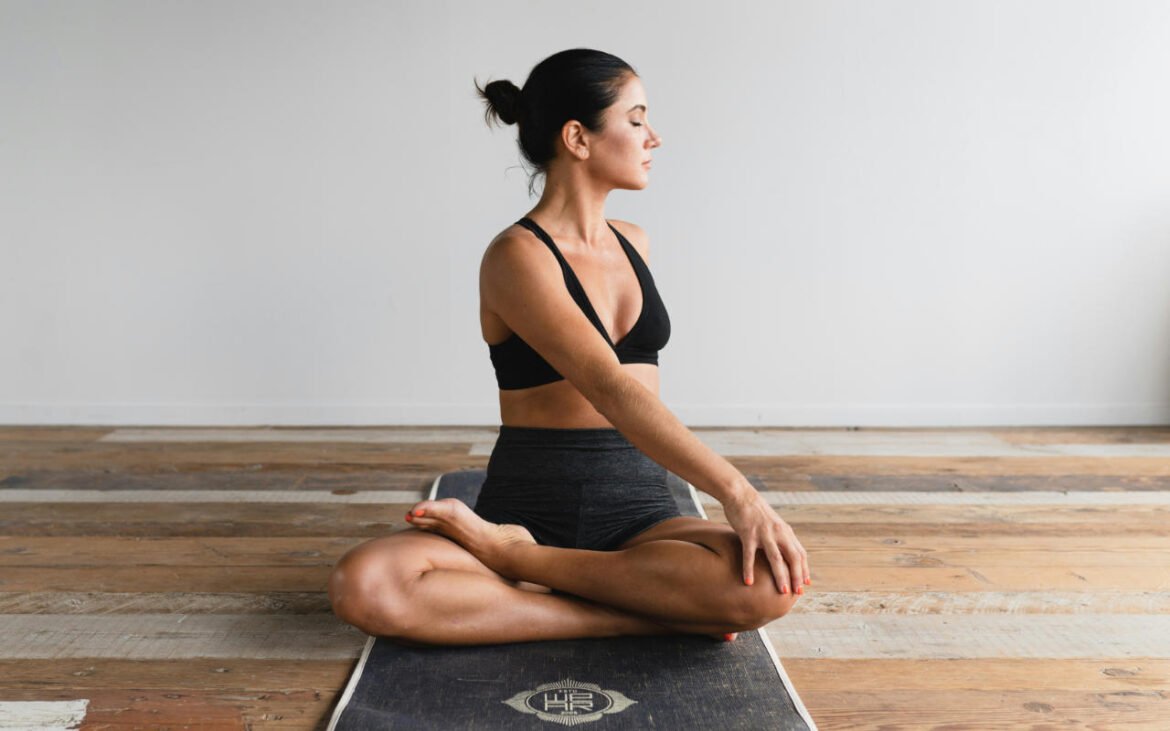
1 comment
[…] teas for focus have been helping people sharpen their mental clarity for centuries, long before energy drinks and synthetic nootropics hit the market. These natural […]